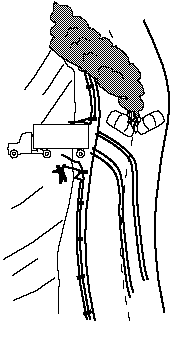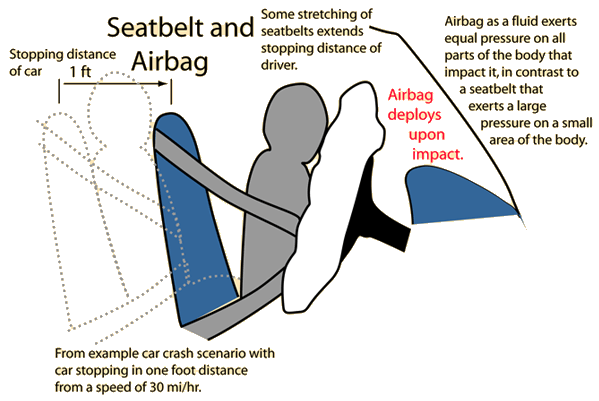When would you be better off not wearing your seatbelt?
 |
My friend Eddie's Uncle Joe heard about this truck driver who narrowly avoided a fiery wreck by plunging his truck through the gaurdrail and down a 100 meter cliff. If he had had his seatbelt on, he would never have been able to jump out at the last second and hang on to the gaurdrail. Maybe so.But the work-energy principle must be satisfied in every collision, and it dictates that the work done in stopping the driver must be equal to the driver's kinetic energy. The shorter the stopping distance, the greater the impact force. And cases where the seatbelt would not lengthen your stopping distance and decrease your impact force are about as rare as this kind of accident. Rather than making judgements about safety from anecdotes like the one above, it is wise to consider the evidence from the large database on traffic fatalities. |
Work-energy principle
Car crash scenario
| HyperPhysics***** Mechanics | R Nave |

